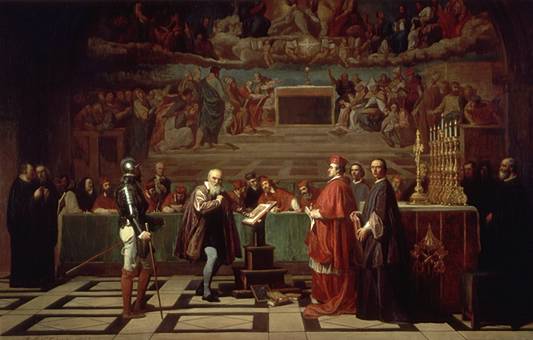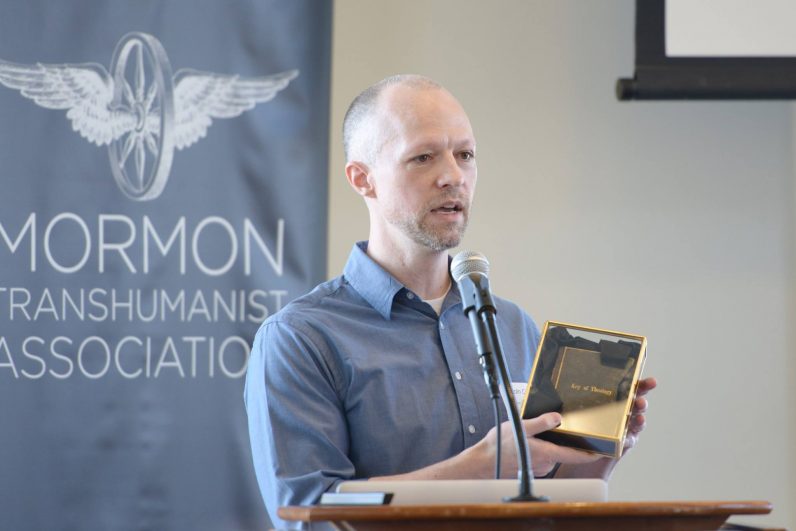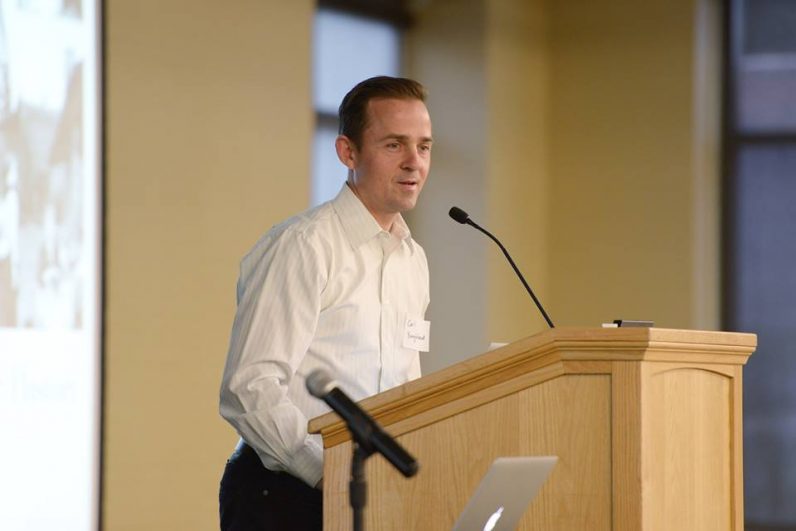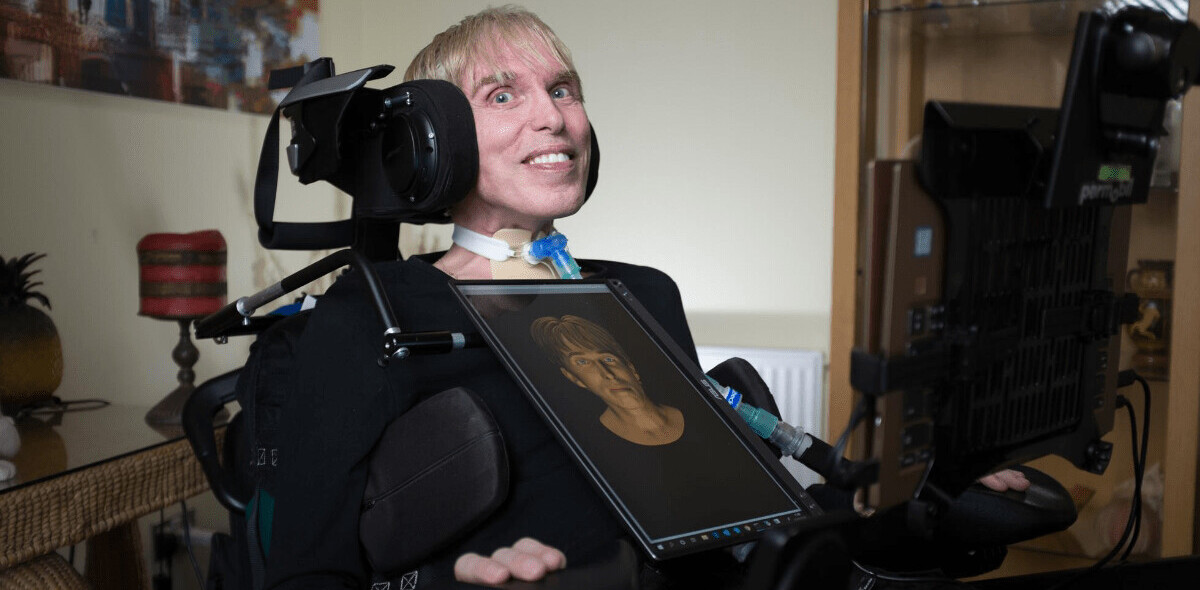![[Best of 2019] Why Mormonism is the best religion for cyborgs](https://img-cdn.tnwcdn.com/image?fit=1280%2C720&url=https%3A%2F%2Fcdn0.tnwcdn.com%2Fwp-content%2Fblogs.dir%2F1%2Ffiles%2F2019%2F06%2F22.png&signature=d2ec0f6185fa72754b82326224e64610)
It feels like we’re finally getting to the magical stage where technology is catching up with our imagination — which of course only means one thing: cyborgs!
This might still sound futuristic, but they’re actually already walking among us, and many more of us could become cyborgs in the coming years, if plans by people like Elon Musk pan out. It’s going to take a while to adjust to this coming reality, both practically (in terms of legislation) and ideologically (we’re all familiar with dystopian depictions of half-human, half-machine abominations). There is one area, however, that’ll probably be particularly difficult to get to play nice with cyborgs: religion.
Science and technology have from time to time been at odds with religion throughout human history, so we should get ahead of the problem and find the smoothest religious path for mass cyborg adoption. Sounds good, so what is it, new age Buddhism? Church of the Flying Spaghetti Monster? Nope. Mormonism.

Mormonism is so much more than its stereotypical missionaries in cheap suits. Its unique take on the relationship between the material and the spiritual, in addition to the Mormon mission of becoming “like God,” plays well with cyborg technology — which is exactly what the Mormon Transhumanist Association (MTA) aims to prove.
Oh, and there’s a bit about aliens later on, so you’ll want to keep reading — but let’s dive into the fundamental ideas first.
Welcome to Mormon Transhumanism
The MTA currently has around 800 members and presents itself as the world’s largest advocacy network for ethical use of technology and religion. While it’s not technically a religious organization, it supports its members and their personal religious affiliations, Mormon or otherwise, and help them to apply transhumanism to their unique situations. To advocate its message and invite discussion, the MTA hosts an annual conference on the intersection of technology and religion, and has its own YouTube channel.
To truly understand the MTA, and what the relationship between cyborgs and religion is, we need to wrap our heads around two fundamental concepts — Mormonism and transhumanism — which coincidentally, is what the MTA is all about. I spoke with Lincoln Cannon, Board member and Founder of MTA, and Carl Youngblood, MTA’s Vice-President, to get their views on the matter.
First up: transhumanism. To Cannon and Youngblood, the transhumanist movement advocates for the ethical use of technology to extend human abilities. Transhumanists are interested in all the ways technology is changing the human condition, and especially how those changes are accelerating as the speed of technological development picks up.

Now, Mormonism might be harder to summarize in one simple paragraph — just like any other religion. The Cliffs Notes version is that it was founded in the early 1800s in the US by Prophet Joseph Smith after he received a vision from God. The main scripture of the Mormon religion is the Book of Mormon, which Smith said he’d written up from texts on golden plates which were inscribed by ancient prophets that had lived on the American continent.
Despite having their own scripture, Mormons still very much believe in the Bible — as this video can attest to — and almost all identify as Christians. They just regard the Book of Mormon as the final and concluding piece of Christian scripture, in addition to the previous two testaments.

To Cannon, Mormonism is the “immersive discipleship” of Jesus Christ, meaning it’s not just a religion about Jesus, but rather an effort to live the religion of Jesus. The relationship between humans and the divine within Mormonism is also a tad different to other Christian sects, as Youngblood puts it:
“One of the fundamental principles of Mormonism is the concept that humans are of the same species as God, if you will, and that we are children of God and have the capacity to become like God.”
So while most religions have a strict divide between the material and the spiritual, with the divine being on the spiritual side, Mormons reject this dualist separation. And this is where members of MTA believe Mormonism’s compatibility with transhumanism stems from.

I’m a material being, in a material world
“Our theology is materialistic, not in the mundane sense, but in the philosophical sense of physicalism,” Cannon explains. “We do talk about both bodies and spirits, but in Mormonism spirits are material — they’re another expression of materiality or physicality. In our scriptures, we have a passage that says: ‘There’s no such thing as immaterial matter, all spirit is matter.’”
According to Mormons, God isn’t some type of abstract spiritual force as in most other Christian theologies, but rather an embodied community of persons. And it’s these two theological points — the embodiment of God and the materiality of spirit — which Cannon and Youngblood think makes Mormonism lend itself better to scientific and technological approaches on a metaphysical level than most other theologies.
But if you know anything about Mormons in general, it shouldn’t come as a surprise that MTA’s views aren’t necessarily shared by all their religious brethren. Mormons view their bodies as a temple, or something sacred that should be taken care of, which is why many are opposed to body modifications like piercings and tattoos. For Cannon and Youngblood, this is more a symptom of culture, rather than religion.
“Church leaders often discourage people from getting tattoos and piercings and things like that, and I’d say more radical body changes are viewed with suspicion by the Mormon community,” says Youngblood. “But as procedures become more standard and widely accepted, they become less and less of an issue. We’ve already starting to see that with tattoos as they become more common.”
To Youngblood and Cannon, this is clearly an example of cultural biases as most Mormons don’t have any qualms with traditional augmentations, such as plastic surgery or getting a pacemaker. The religion itself and the scripture is fine with worshipers being cyborgs, the only possible obstacle is negative cultural connotations.
So all of this seems great in terms of tolerating technology, but is there anything about Mormonism that might actually drive worshipers to embrace augmenting themselves with technology?

Becoming like God through technology
Now we get to the really juicy stuff. As technology advances, we’re provided with more and more options to augment our bodies with tech, but why does the MTA think that pleases God?
For Youngblood, it’s part of the Christian imperative of engaging in charitable acts, to provide assistance to people who are in need; whether it’s spiritual, emotional, or physical.
“The technologies that allow us to do that are the things we should be pursuing. And by doing that, we’re not just pleasing God, but we’re also hopefully starting to resemble God,” Youngblood explains. “True worship is not merely telling God how awesome he or she is all the time, but trying to actually be like God. That’s the ultimate goal.”
Cannon elaborates being like God isn’t just to help people who have problems, it’s also about helping them to be more than they’ve ever been before:
“In Mormon theology, the aim of God is to bring about the immortality and eternal life of humanity. So even though it’s highly important, it’s not enough to just help people that have problems. We all have problems compared to God, we’re all dying, we’re all suffering, we’re all less intelligent, we’re all less compassionate. So if we really aim to become like God, it’s not just a matter of mitigating the risk of deficiencies. It’s also a matter of enhancing ourselves in every way — physically, spiritually, and in all of the virtues — and technology can help in that effort to enhance humanity.”
To sum up: we’re made in God’s image, but we’re not as perfect as him. So if we ‘increase’ our humanity and capabilities, we’re on a path to become more like God, which should be our goal according to Mormonism. And because of Mormonism’s unique view on spirits being matter, it’s logical — and almost a requisite — to make use of technological and material augmentations to push us further into Godhood. That sounds… pretty cool.
However, it’s not like Mormons necessarily see God as some kind of technological mesh, instead the MTA questions whether our pop-culture view of cyborgs will actually become reality.
“I think that the further enhancements to the body that we’ll see in the coming years, will probably continue to be focused on increasing or enhancing our humanness, rather than detracting from it,” Youngblood explains. “So instead of becoming like Captain Picard with the Borg eyeball, I think that what we’ll see our technologies that actually make us seem even more along the lines of whatever we see as the ideal human.”

So if Cannon and Youngblood don’t look like Borged-up Picard, how are they putting their beliefs into action? “I haven’t felt like any more invasive technologies are sufficiently advanced to justify at the moment, but that will probably change at some future date,” Youngblood explains. But in the meantime, Youngblood and Cannon seek out the enhancements available to us — which is quite a lot, making most of us a form of cyborgs — and they advocate for further development of augmentation.
Both of them are really health conscious and take specialized supplements — which is an enhancement, not mitigation of deficiency — to help them be healthier and live longer. They also make use of apps to optimize their exercise regimens and use biometric tracking to check up on their blood pressure, oxygen and glucose levels, and so on. They’re also big fans of home automation, extending their personal technological enhancement to their environment. Youngblood has recently built a certified Passive House — which produces more energy than it spends — and Cannon is big into automating his home, being a huge fan of Nest products.
God is out there
The MTA is unique in the sense that it wants to make sure this trend of enhancement is kept up, introducing better and better options for us to become more than we are — and to become more human. This is something the MTA believes everyone, not just Mormons, but also atheists and people of other faiths, can accept. The MTA thinks we as humans can attempt to come up with the best human virtues we can think of, and then work towards it — no matter whether you believe it’s based on God as a being or a community of beings that embodies those virtues.
Of course this raises the question of how we can be sure we’re chasing the right ‘virtues’ as our own view of what constitutes the most ‘human’ or the quality closest to God. And here’s where MTA’s open-minded approach to Mormon theology really blows my mind:
“While this community or this being doesn’t yet exist, it’s still possible for us as humans to conceive of an attempt to imagine that and then work towards it. But we go further as Mormon transhumanists,” Youngblood explains.
“Most of us actually think that given we’re probably not the only beings in the universe, and given that we probably aren’t the first ones to evolve, it’s highly likely that there are more advanced, more compassionate, more benevolent beings out there already. So we think that the existence of God is probably inevitable, in the sense that we’re most likely not the first or the only civilization to advance as far as we have.”
Does that mean, in layman’s terms, God might exist as a community of cyborg aliens? That’s simply an amazing interpretation of Mormon theology. Whatever your beliefs are, it’s refreshing to see the MTA’s non-judgemental approach to turning people into cyborgs. And to a cynical atheist, it’s even more amazing that this tech-positive approach can be extracted from Mormon scripture.
So the next time you’re faced with the existential dilemma of enhancing your body with tech, you might want to ask yourself: what would the Mormons do?
Get the TNW newsletter
Get the most important tech news in your inbox each week.





